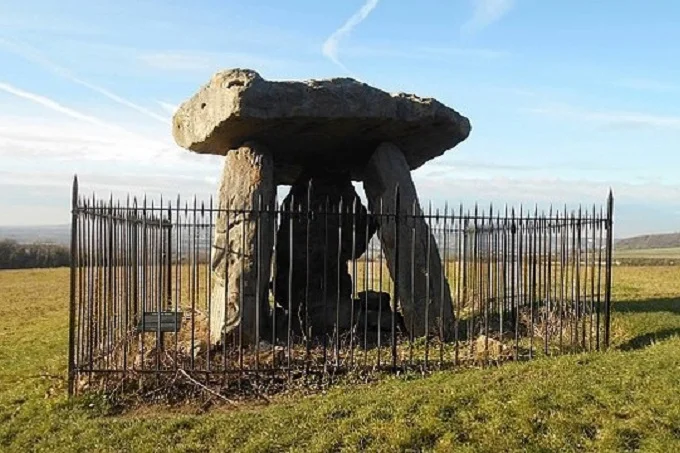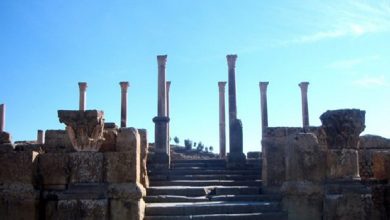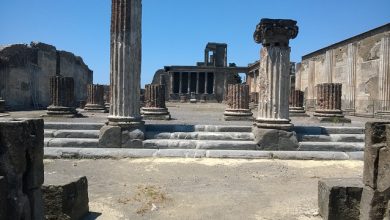Guardian spirits of ritual places

Why are hairy yetis often seen next to stone circles, and how is the monster from Loch Ness connected with ancient structures at the bottom? These may be phenomena of the same order.
One of the most unusual things in cryptozoology is that a considerable part of the “monsters” is seen near ancient archaeological sites, especially stone circles and mounds.
A story happened to George Price, a researcher of mysterious British big black cats. In 2002, Price served in the British Army and took part in military exercises held on the Salisbury Plain. This plain is a real storehouse of ancient mysterious stone structures, the most famous of which is Stonehenge.
Tanks were involved in the military exercises, but at some point, Price was distracted from the tanks and noticed a strange creature in the thickets nearby that looked like a large monkey with reddish fur like an orangutan. The creature was hunched over, and Price immediately figured that it would be very tall if it got to its feet.
In the county of Kent, near the village of Blue Bell Hill, there is another remarkable ancient stone structure called the Keats-Cauty House or simply Keats-Cauty. This is the so-called trilith – megalith of three stones, covered with a fourth large stone as a mushroom cap.
Some historians believe that ritual sacrifices were held in this place thousands of years ago, but this is not the strangest thing associated with this structure. Many locals have seen unusual people in skins, looking primitive and dirty, near Keats-Kouti. These supposedly primitive people were mostly seen on the nights of the full moon and with a strong cold wind.
In another British county, Derbyshire, there is a stone circle called the Nine Ladies, dating from the Bronze Age. This circle was a cult place both in the past and in the present, nowadays it is eagerly visited by modern druids and pagans. Unusual creatures were also noticed next to it. To get the latest stories, install our app
In 1991, a large hairy beast, similar in appearance to a cross between a monkey and a man or a man and a wolf, was spotted near the Rollright stone circle in Oxfordshire. And in Dartmouth, in a place with unusual Neolithic stones called Lustleigh Cleave, shaggy “cavemen” are seen from time to time on winter nights.
There are a lot of similar stories in the UK stuffed with stone circles and megaliths. But how are these monsters and megaliths connected? The American bigfoot researcher Linda Godfrey has her own theory on this.
Godfrey studies sightings of hairy humanoid creatures throughout the United States. Most often, she comes across stories about bigfoots and so-called Dogmen. And many of these sightings happened near old Indian mounds, which is why locals consider such creatures to be Indian werewolves.
“I can tell you that Native Americans from different tribes have told me that there are zoomorphic (in the form of animals) guardian spirits of sacred places,” says Godfrey.
That is, ancient people were able to somehow summon fantastic animals and used them as a kind of “guard dogs” for especially revered sacred and mystical places. And there may be not only animals but also people. This can explain the observation near the circles of primitive people in skins.
And now we will return to the UK again and pay attention to the most popular local monster, namely Nessie, who lives in the Scottish Loch Ness. Few people know, but the surroundings of this lake are packed with ancient castles and ruins of old houses. There are a lot of archaeological antiquities here.
However, how is Nessie connected with the ruins on earth? And it is probably not connected with them, but it is connected with unusual stone circles at the bottom of Loch Ness itself. How these circles ended up there is a separate question, but very few people know about their existence, and they were discovered completely by accident.
This happened in the summer of 1976, which was distinguished by the unprecedented heat for these places. It was this summer that a private American expedition went to Loch Ness in search of the legendary monster. The head of the group was a man named Marty Klein, and together with his friends, in particular, he took intriguing pictures of an incomprehensible underwater creature with a long neck using sonar.
But not only did these pictures become a sensation, at the bottom of the lake Klein and his friends found something completely unexpected – incomprehensible circular structures. The sonar found a whole scattering of stone circles at the depth of the northeastern edge of the lake. Large and small, intersecting and single. There were two such places with a cluster of circles in total, they received the corresponding names Kleinedge 1 and Kleinedge 2.
What kind of circles they are has remained a mystery, because, for some reason, no one was particularly engaged in their further study. Some considered it a natural formation, some the work of ancient people who built them when the water level in the lake was much lower.
In 2005, it seemed to be found out that these stone circles arose due to the dumping into the lake of the remnants of stones used in the construction of the Caledonian Canal in 1822, however, this logical version did not find any real confirmation.
Researchers of anomalous phenomena are sure that these are real Neolithic stone circles, similar to the circles of Stonehenge, the Nine Ladies, and many others. And if there are so many of these circles at the bottom of the lake, then the habitation of a large monster here also does not seem strange anymore, if this monster is actually another guardian spirit.




